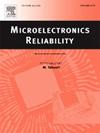在- 40°C和175°C下,对并联的SiC mosfet进行长期正、负栅极偏置应力测试
IF 1.9
4区 工程技术
Q3 ENGINEERING, ELECTRICAL & ELECTRONIC
引用次数: 0
摘要
偏置温度不稳定性(BTI)会对并联SiC mosfet的性能产生不利影响。众所周知,SiC模块的短路稳健性会随着并联器件内阈值电压(VTH)变化的增加而降低,因为电流共享不良。在本文中,在- 40°C和175°C下对5个并联的SiC mosfet进行了400-h正BTI (VGS = 25 V)和负BTI (VGS = - 10 V)应力测试。在VTH范围(最高VTH减去最低VTH)旁边测量了5个设备中每个设备的单个VTH移位和模块VTH移位。在测量VTH之前进行双极预处理,记录峰值VTH(在双极预处理之前测量)和永久VTH(在双极预处理之后测量)。结果表明,与n-BTI相比,p-BTI在- 40°C和175°C下的峰值模态VTH位移分别提高了21%和29%。如果评估永久VTH移位,则BTI测试测量的VTH范围不变。然而,应力后的峰值VTH范围更高,从而表明注入的临时装药的变异性增加。峰值VTH范围也表现出正的温度系数,表明温度增加了注入电荷的变异性。如果将VTH范围作为并联设备中短路稳稳性的指标,所提供的测量结果表明,双极预处理确保模块的短路性能可能不受压力测试的影响,因为ΔVTH移位是均匀的。本文章由计算机程序翻译,如有差异,请以英文原文为准。
Long-term positive and negative gate bias stress tests on parallel connected SiC MOSFETs at −40 °C and 175 °C
Bias temperature instability (BTI) is known to adversely impact the performance of parallel connected SiC MOSFETs. The short circuit robustness of SiC modules is known to reduce with increased threshold voltage (VTH) variation within the parallel devices due to poor current sharing. In this paper, 400-h positive BTI (VGS = 25 V) and negative BTI (VGS = −10 V) stress tests at both −40 °C and 175 °C have been performed on 5 parallel connected SiC MOSFETs. Both the individual VTH shift for each of the 5 devices and the module VTH shift have been measured alongside the VTH range (highest VTH minus lowest VTH). Bipolar preconditioning has been performed before VTH measurement to record both the peak VTH (measured before bipolar preconditioning) and permanent VTH (measured after bipolar preconditioning). The results show that p-BTI stress yields 21 % higher peak module VTH shift compared to n-BTI at −40 °C and 29 % higher at 175 °C. The measured VTH range was unchanged by the BTI tests if permanent VTH shift is assessed. However, the peak VTH range was higher after stressing thereby indicating increased variability in the injected temporary charge. The peak VTH range also exhibits a positive temperature coefficient indicating that temperature increases variability of the injected charge. If VTH range is taken as an indicator of short circuit robustness in parallel connected devices, the measurements presented show that bipolar preconditioning ensures that the short circuit performance of the module would likely be unaffected by the stress tests since ΔVTH shift is uniform.
求助全文
通过发布文献求助,成功后即可免费获取论文全文。
去求助
来源期刊

Microelectronics Reliability
工程技术-工程:电子与电气
CiteScore
3.30
自引率
12.50%
发文量
342
审稿时长
68 days
期刊介绍:
Microelectronics Reliability, is dedicated to disseminating the latest research results and related information on the reliability of microelectronic devices, circuits and systems, from materials, process and manufacturing, to design, testing and operation. The coverage of the journal includes the following topics: measurement, understanding and analysis; evaluation and prediction; modelling and simulation; methodologies and mitigation. Papers which combine reliability with other important areas of microelectronics engineering, such as design, fabrication, integration, testing, and field operation will also be welcome, and practical papers reporting case studies in the field and specific application domains are particularly encouraged.
Most accepted papers will be published as Research Papers, describing significant advances and completed work. Papers reviewing important developing topics of general interest may be accepted for publication as Review Papers. Urgent communications of a more preliminary nature and short reports on completed practical work of current interest may be considered for publication as Research Notes. All contributions are subject to peer review by leading experts in the field.
 求助内容:
求助内容: 应助结果提醒方式:
应助结果提醒方式:


